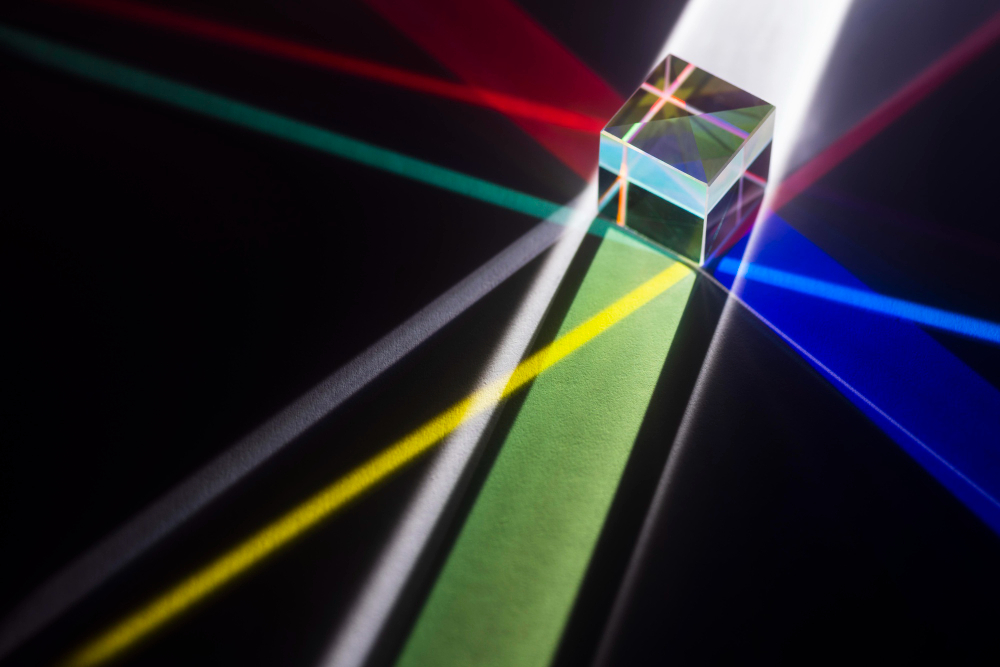
The Elusive Color of Mirrors: Exploring the Optical Illusion of Reflectivity
-
by Margaret Miller
- 6837
Mirrors have been captivating humans for centuries, offering glimpses of our own reflections and the world around us. Yet, have you ever wondered about the color of mirrors themselves? Unlike other objects with distinct hues, mirrors seem to possess an elusive color that defies easy definition. In this article, we embark on a journey to explore the optical illusion of reflectivity, unraveling the mystery of mirrors’ elusive color and the fascinating science behind this intriguing phenomenon.
Perception of Color: A Play of Light
Color perception is a remarkable interplay between light, our eyes, and our brain. When we observe an object, we perceive its color based on the wavelengths of light it reflects or emits. For example, a red apple appears red because it reflects red light and absorbs other colors. The colors we perceive are a result of the interaction between light and matter. But what happens when an object appears to reflect all colors?
Perfect Reflectors: The Puzzling Case of Mirrors
Mirrors are unique objects known as perfect reflectors. Unlike most surfaces that absorb and scatter light, mirrors efficiently reflect almost all the light that strikes them. When light hits a mirror, it bounces off at an angle equal to the angle at which it approached. This phenomenon, known as reflection, creates the illusion that mirrors possess their own color.
The “Color” of Mirrors: An Illusion Unveiled
In reality, mirrors do not have a color of their own. Instead, they reflect the colors of the objects and light sources in their vicinity. The reason mirrors appear silvery or grayish is that they reflect a combination of all colors in the visible spectrum. When we look at a mirror, we see the colors of our surroundings, not the mirror’s color itself. This optical illusion can be both captivating and puzzling, challenging our perceptions of the world around us.
Reflectivity and Light Absorption: The Key Factors
The reflective properties of mirrors are a result of the interaction between light and the metal coating or reflective material on their surface. Most modern mirrors are made by coating glass with a thin layer of aluminum or silver, which provides the highly reflective surface. This coating efficiently reflects light, preventing it from penetrating the mirror’s surface and creating the illusion of color.
History of Mirrors: From Polished Metals to Modern Glass
The concept of mirrors dates back thousands of years. In ancient times, mirrors were made from polished metals such as bronze, copper, or silver. These early mirrors were not as efficient at reflecting light as modern mirrors, leading to a less clear and bright reflection. Over time, advancements in metallurgy and glassmaking techniques led to the creation of more effective and durable mirrors.
Art and Aesthetics: The Symbolism of Mirrors
Beyond their practical uses, mirrors have held significant symbolic and aesthetic value throughout history and in various cultures. In art and literature, mirrors often represent self-reflection, introspection, and the exploration of one’s inner thoughts and emotions. The mirror’s ability to show us a reflection of ourselves has been a powerful metaphor for self-awareness and personal growth.
Fun with Infinity: Mirrors and Multiple Reflections
One of the most entertaining aspects of mirrors is their ability to create multiple reflections in the phenomenon known as the “infinity effect.” When two mirrors face each other, light bounces back and forth between them, creating a seemingly infinite series of reflections. This mesmerizing visual display has fascinated both children and adults, offering a delightful play of symmetry and repetition.
Magic of Kaleidoscopes: A World of Color and Patterns
Kaleidoscopes are another delightful creation that relies on mirrors’ reflective properties. Inside a kaleidoscope, colorful objects such as beads or glass pieces are arranged in a tube, and multiple mirrors create a mesmerizing display of symmetrical patterns. As you twist the kaleidoscope, the mirrors create ever-changing and beautiful patterns that ignite the imagination.
Beyond Reflections: Funhouse Mirrors and Distorted Reality
In amusement parks and funhouses, curved mirrors are used to create amusing and distorted reflections of ourselves. Convex mirrors bulge outward, making us appear shorter and wider, while concave mirrors curve inward, elongating and distorting our images. These playful mirrors offer a lighthearted reminder that our perception of reality can be altered by the surfaces we encounter.
Metaphysics and Symbolism: Mirrors in Culture and Beliefs
Mirrors have also been deeply woven into cultural beliefs and metaphysical practices. In various folklore and superstitions, mirrors are believed to have the power to capture souls or reveal hidden truths. In feng shui and other spiritual practices, mirrors are strategically placed to harmonize energy and create a sense of balance and positive flow in spaces.
Conclusion: Reflecting on the Illusion
In conclusion, the enigmatic color of mirrors is a testament to the fascinating interplay of light, perception, and our understanding of the world. As perfect reflectors, mirrors provide us with a glimpse of our surroundings and ourselves, creating an illusion that defies simple explanations. From the symbolism in art and culture to the delightful kaleidoscope patterns and funhouse distortions, mirrors continue to captivate our imaginations and challenge our perceptions.
Mirrors have been captivating humans for centuries, offering glimpses of our own reflections and the world around us. Yet, have you ever wondered about the color of mirrors themselves? Unlike other objects with distinct hues, mirrors seem to possess an elusive color that defies easy definition. In this article, we embark on a journey to…
Mirrors have been captivating humans for centuries, offering glimpses of our own reflections and the world around us. Yet, have you ever wondered about the color of mirrors themselves? Unlike other objects with distinct hues, mirrors seem to possess an elusive color that defies easy definition. In this article, we embark on a journey to…